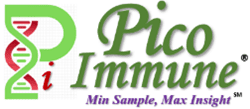Let our experts support all your multi-parameter flow cytometry needs
Flow cytometry is a versatile and powerful technology for drug discovery and development. We offer a wide-range of flow cytometric analyses to help our clients determine the best strategy for project needs. Our cellular and molecular analysis services are designed to facilitate immune monitoring, epitope discovery, immunophenotyping or cell isolation projects. With off-the-shelf solutions to complex flow analysis, we serve as a strategic resource with extensive capabilities to design, validate and deploy cytometric assays for the unique examination of various parameter for clinical development. In order to support your R&D efforts, our flow cytometry services strategically align with specific drug development programs across a wide-range of therapeutic areas including cancers, autoimmune and other diseases.
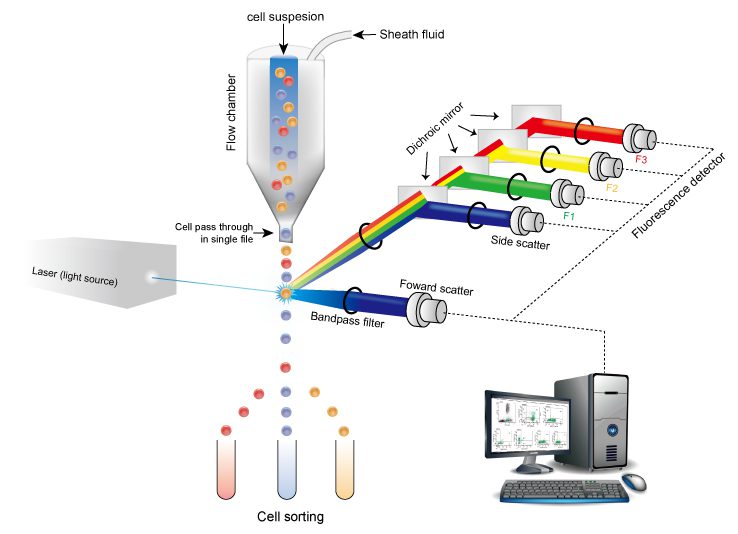
Our Services
Cell Sorting (FACS & MACS)
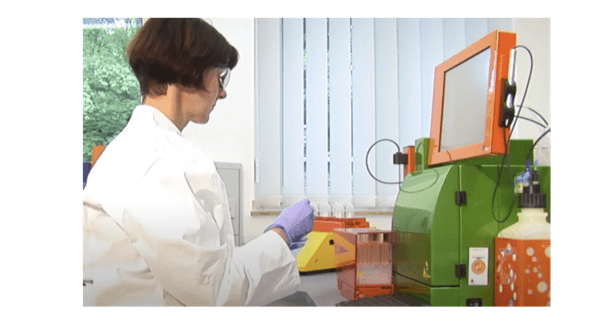
- Fluorescently activated cell sorting (FACS) is routinely used in the bio-pharma industry to isolate distinct cells from a heterogeneous cell suspensions with high purity and viability. Typically, cells in suspension are tagged with fluorescent antibodies, thus can be identified and isolated for further analysis or cell culture.
- Magnetic activated cell sorting (MACS) uses magnetic particles conjugated to antibodies against various cell surface antigens. When added to cells, these conjugated particles bind to cognate antigen. Placing this magnetic particle-cell suspension in a magnetic fields facilitates separation of the bound cells from all other cells.
- We support protein and cell engineering and development, antibody drug development, disease identification, and characterization.
Immunophenotyping
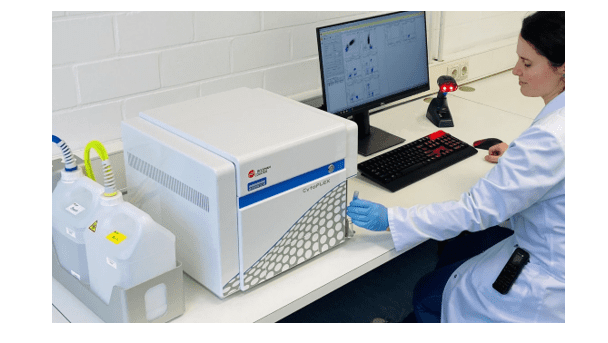
- Immunophenotyping is used to study the protein expressed by cells. Cells are labeled with fluorescent dyes or antibodies. Target cells can then be easily distinguished based on fluorescent signal patterns on a flow cytometer even in a suspension with multiple cell types.
- Biological drugs can have an immunomodulatory effect as part of their mode of action or be immunogenic, either of which can cause safety issues or reduce a drug’s therapeutic effect. Immunophenotyping can highlight biological effects on several immune cell subset simultaneously and help guide the drug development process.
- Complexity of heterogeneous cell population analysis continues to increase as more markers are needed to differentiate functional cell sub-populations. Our powerful CytoFlex S flow cytometer has the capabilities to meet increased demands for various samples.
Multiplex Cytometric Bead Array (CBA)
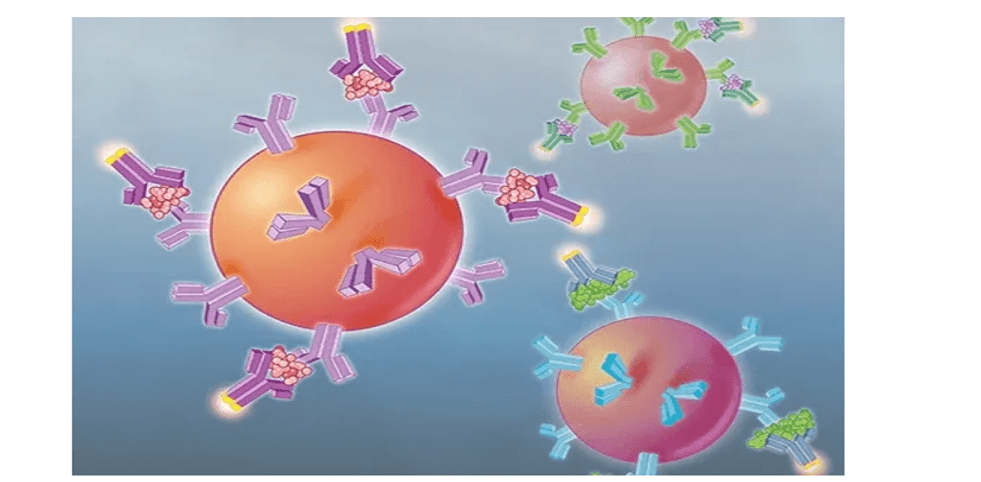
- Multiplex CBA is a flow cytometry-based assay that uses multiple antibody-coated capture beads where the antibodies on each bead being are specific for one analyte.
- A variety (up to 30) of soluble and intracellular proteins, including cytokines, chemokines, growth factors, and phosphoproteins can be measured using just 25 to 50 μL of a sample. Other methods such as ELISA and Western blot require a similar amount of sample, but only one protein can be analyzed from the same volume.
- It is high throughput (96 well format) and deal for routine compound screening. We are capable to customize the analyte panels to meet the requirements of various projects.
Multiplex miRNA Profiling (FirePlex)
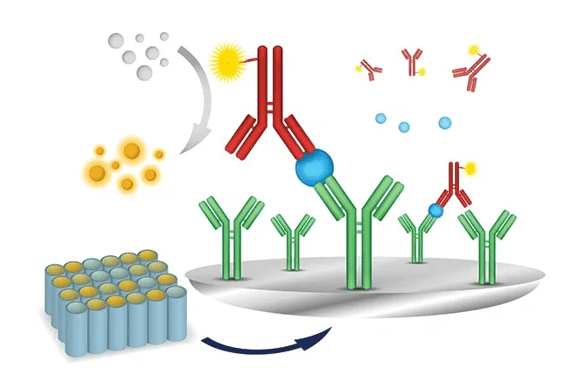
- FirePlex immunoassays uses particle technology to measure up to 75 analytes, ranging from cytokines to microRNA, in just a small amount of sample. These assays have high-performance, high-throughput multiplexing capabilities and provide substantial information from one sample.
- Levels of miRNAs can be profiled directly from crude biofluids, including plasma, serum, and exosomes, without the need for RNA purification. A panel of 68 miRNAs in each sample can be measured simultaneously.
- Prevailing techniques are limited by sensitivity, amount of sample required or the amount of information that can be ascertained from a single sample.
Multiplex mRNA Profiling (PrimeFlow)
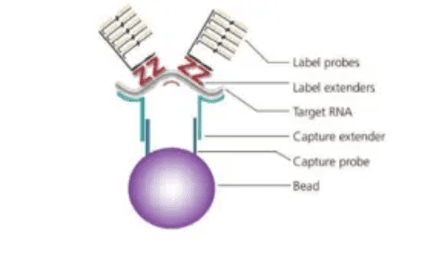
- PrimeFlow technology offers superior specificity, protein and kinetic analysis at the single cell level, high throughput capability and simultaneous monitoring of several target RNAs in the same cell type or in distinct cell populations in a heterogeneous cell sample. This assay employs fluorescence in situ hybridization (FISH) with branched-DNA signal amplification for simultaneous detection RNA targets. Further, RNA labeling can be combined with cell surface and intracellular fluorescent antibody staining adding a greater degree of specificity.
- Our multiplex RNA assay reveals the dynamics of both RNA and protein expression within individual cells, facilitating unprecedented analysis of their correlation as the cell changes over time or in response to a stimulus.
Multiplex Phosphoprotein Profiling (PhosphoFlow)
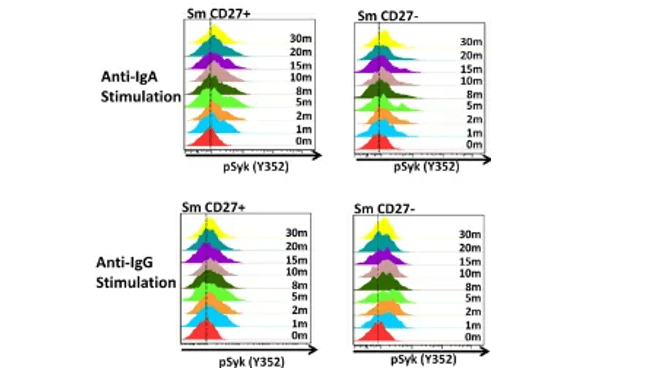
- Phosphoflow cytometry can specifically detect the state of protein phosphorylation at the cellular level. Our assays are optimized for multiple cell types such as immune or cancer cells.
- These assays are a more powerful and sensitive approach than traditional assays such as Western Blots which only highlight global protein status in a seemingly homogenous population.
- Both cell surface molecules and intracellular phosphorylated signaling proteins are simultaneously analyzed. We use well-validated phospho-specific antibodies to quantify the signaling events in individual cells.
- We are capable to customize the phosphoprotein panels for different samples to meet the requirements of various projects.
Cell Cycle, Proliferation, Apoptosis, and Protein Translation Analysis
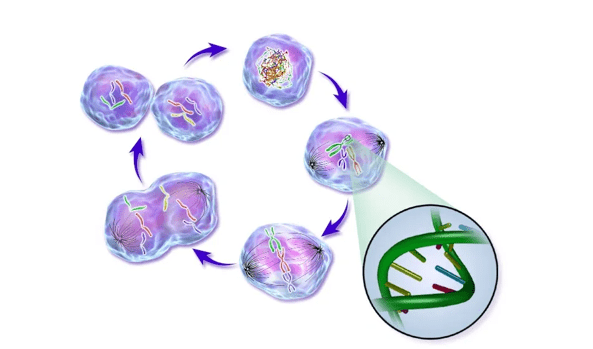
- Cell cycle, proliferation, apoptosis and protein translation analyses are important parameters to evaluate toxicity and biological effects of test drugs.
- We offer flow cytometry-based assays that monitor several of these parameters simultaneously or individually:
- Cell Proliferation: CFSE dilution or BrdU incorporation
- Cell viability: 7-AAD, propidium iodide (PI), LIVE/DEAD Fixable Aqua Cell Stain
- Cell Cycle: PI, BrdU staining
- Protein Translation: Surface Sensing of Translation (SUnSET)-based Ribosome Speed of Elongation (SunRiSE)
Nanoparticle Size Quantification, Cellular Uptake Analysis
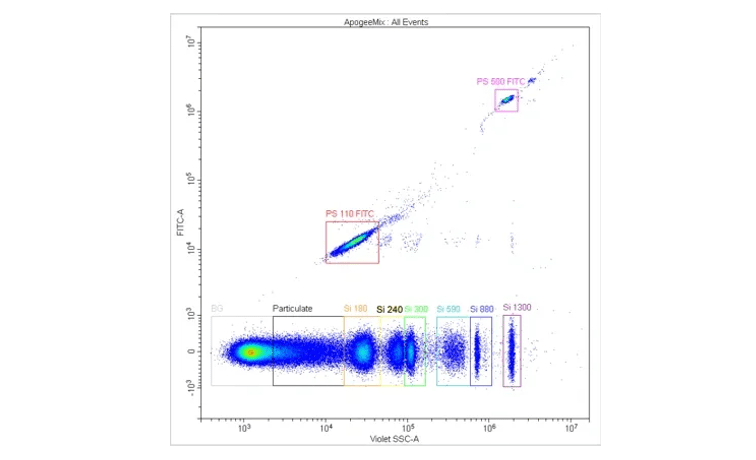
- Our cytometer is capable of resolving 70 nm and 100 nm nanoparticles using violet laser.
- Accurate size measurements in a nanoparticle product.
- Nanoparticle uptake by cells can be monitored.
- Nanoparticle drug toxicity can be evaluated by examining relevant cellular markers such as Annexin V and cytokine production which can also be monitored simultaneously.
Custom Antibody Labeling
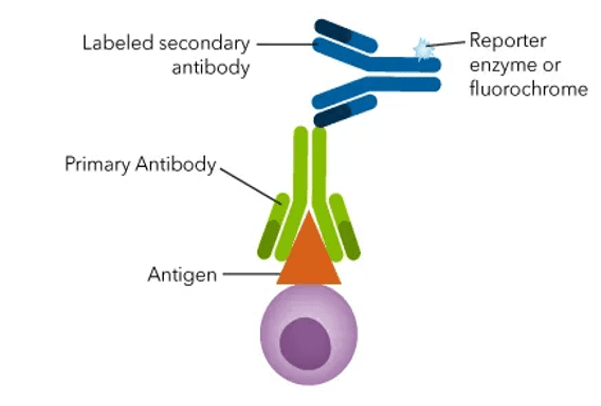
- Antibodies are increasingly becoming important therapeutic agents.
- Our assays are able to label antibodies with a variety fluorescent dyes such as FITC and APC.
- Our flexible dyes options are excellent for avoiding fluorochrome compatibility issues with downstream multi-parameter techniques such as flow cytometry or fluorescence microscopy.
- Further, a fluorescent dye-conjugated test antibody facilitates more in depth studies providing mechanistic insights and potential targets.
